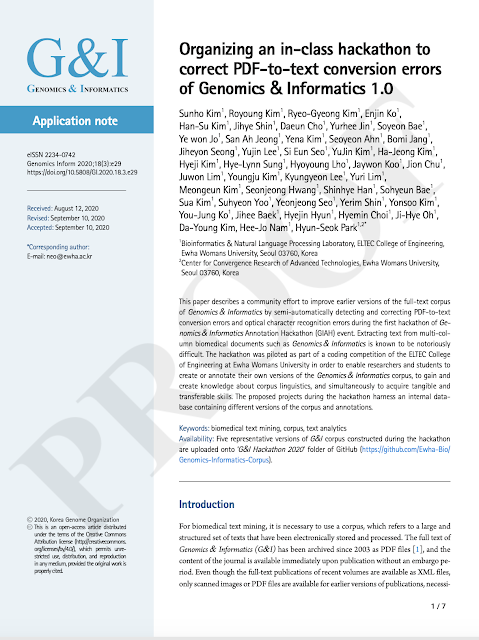Genomics & Informatics: Organizing an in-class hackathon to correct PDF-to-text conversion errors of Genomics & Informatics 1.0
https://genominfo.org/journal/view.php?number=620
This paper describes a community effort to improve earlier versions of the full-text corpus of Genomics & Informatics by semi-automatically detecting and correcting PDF-to-text conversion errors and optical character recognition errors during the first hackathon of Genomics & Informatics Annotation Hackathon (GIAH) event. Extracting text from multi-column biomedical documents such as Genomics & Informatics is known to be notoriously difficult. The hackathon was piloted as part of a coding competition of the ELTEC College of Engineering at Ewha Womans University in order to enable researchers and students to create or annotate their own versions of the Genomics & Informatics corpus, to gain and create knowledge about corpus linguistics, and simultaneously to acquire tangible and transferable skills. The proposed projects during the hackathon harness an internal database containing different versions of the corpus and annotations.

Comments
Post a Comment